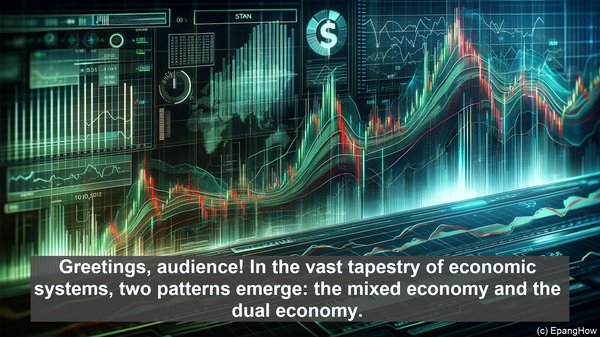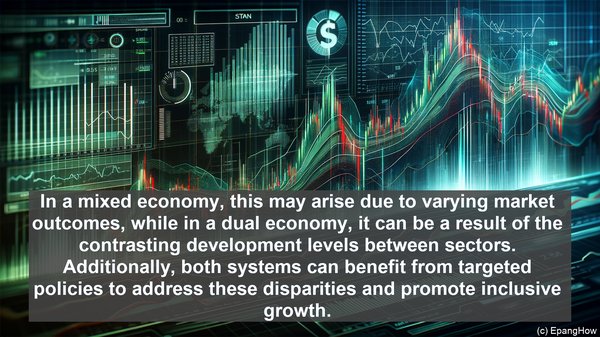Introduction: The Economic Systems Mosaic
Greetings, audience! In the vast tapestry of economic systems, two patterns emerge: the mixed economy and the dual economy. Both have their unique characteristics, but they also intersect in intriguing ways. Let’s start unravelling this intricate web!
The Mixed Economy: A Fusion of Forces
At its core, a mixed economy combines elements of both the market and planned economies. It embraces private enterprise, allowing businesses to operate freely, while also acknowledging the government’s role in regulation and public services. This blend aims to strike a balance, leveraging the market’s efficiency while ensuring social welfare and stability.
The Dual Economy: A Tale of Two Sectors
In contrast, a dual economy is characterized by the coexistence of two distinct sectors: a modern, industrialized one, and a traditional, often agrarian, sector. This duality can arise due to historical, geographical, or socio-economic factors. The modern sector typically experiences rapid growth, while the traditional sector may face challenges in terms of productivity and access to resources.

Overlap and Interplay: Shared Aspects
While the mixed and dual economies may seem distinct, they do share certain features. For instance, both can witness income disparities, albeit in different forms. In a mixed economy, this may arise due to varying market outcomes, while in a dual economy, it can be a result of the contrasting development levels between sectors. Additionally, both systems can benefit from targeted policies to address these disparities and promote inclusive growth.
Benefits of the Mixed Economy
The mixed economy’s strengths lie in its adaptability and resilience. By harnessing market forces, it can respond to changing consumer demands and allocate resources efficiently. Simultaneously, the government’s oversight can prevent market failures, such as monopolies or externalities. Moreover, the mixed economy’s emphasis on public services ensures access to essential facilities like healthcare and education, fostering societal well-being.
Advantages of the Dual Economy
In a dual economy, the modern sector often serves as an engine of growth, driving technological advancements and attracting investments. This, in turn, can have a positive spillover effect on the traditional sector, facilitating its integration into the broader economy. Additionally, the dual economy’s diversity can provide employment opportunities across skill levels, contributing to a more inclusive workforce.

Challenges and Considerations
No economic system is without its challenges. In a mixed economy, ensuring a fair distribution of resources and opportunities can be a constant endeavor. Balancing the market’s dynamism with the need for regulation requires careful calibration. Similarly, in a dual economy, bridging the gap between sectors and addressing disparities can be complex, necessitating targeted policies and investments.
